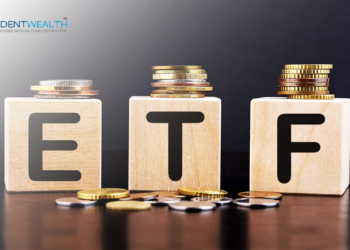
As we all know that the prices of bonds change very frequently, have you ever asked yourself why?
In this article, we have covered the Why and How the Bond price Fluctuates.
Before understanding that we need to understand what Bond duration is.
The calculation of how much bond prices are probably to change if and when interest rates move is called ‘Bond Duration’. In other words, with the change in the interest rate in the economy the duration of the bond will change. In technical terms, the bond duration is a measurement or assessment of interest rate risk. Understanding this can provide some help to investors to determine how bonds fit into a broader investment portfolio.
Understanding bond duration:
It’s more or less impossible to listen or study the Bond Markets without coming over the word “duration”.
But what does this term covey to us? And how does it influence your savings?
At first, it’s very necessary to acknowledge or understand how interest rates and bond prices are related to each other. The key element to remember is that rates and prices move in adverse directions. When interest rates increase, prices of traditional bonds decrease, and vice versa.
So, if you have a bond that is paying you an interest rate of 4% (in other words, yielding at 4%) and rates go-up, that 4% yield doesn’t look as attractive. It’s lost some interest (and value) in the marketplace. It is measured in years or annually. Usually, the higher a bond’s duration or bond fund’s duration (means the longer you need to wait for the payment of coupons and return of principal), the more its interest rates rise as the price will take a drop.
How duration affects the price of your bonds?
So how does this basically work? As a principal rule, for every increase or decrease of 1% in interest rates, the price of bonds will change approximately around 1% in the opposite or adverse direction for every year of duration. % Change in prices of the bond if rates spike 1%.
Hypothetical graph of the result of duration, exclusively on bond prices.

Let us take an example, suppose if a bond has five years duration and interest rates rose by 1.5%, the bond’s price will be fall by approximately 7.5%. On the other hand, if a bond has five years duration and interest rates fall by 1.5%, the bond’s price will be rose by approximately 7.5%.
Getting a piece of proper information about duration is especially important for those who are planning to sell their bonds prior to maturity.
If you buy a 10-year bond that yields 3% for Rs.70,000, you will still receive Rs.2,100 each year and will get back your Rs.70,000 principal after 10 years in any case of what happens with interest rates. If you sell your bond before it matures (or if you invest in a fund that buys and sells bonds while you own it), however, rate fluctuations can affect the price of your bonds.
Why Bond Duration is so helpful?
Because every bond and bond fund have a time span, you and your financial advisor can use those statistics to compare bonds and bond funds as you build and change your investment portfolio.
For example, if you expect interest rates to increase, it might make emphasis on shorter-term investments (in other words, those that have lower-interest-rate risk). Or, in this type of environment, you may wish to concentrate on bonds that take on various types of risks, such as the Strategic Income Opportunities Fund, which is least affected by movements in the interest rates.
It’s also essential to remember that duration is only one of the numerous factors that could affect the price of your bonds. And that’s why we think it’s more or less important to work with a financial professional who can help you build a portfolio that’s constructed to meet your individual goals.
Bond investing in today’s market:
In nowadays low yield and low return environment, every penny counts. If you’re planning for retirement or saving for the future, consistent results and low fees are key to achieving your objectives.
Read Next: “Dividend Yield Mutual Funds”
For more information, reach us at [email protected]
Team, MyGoalMySip.











